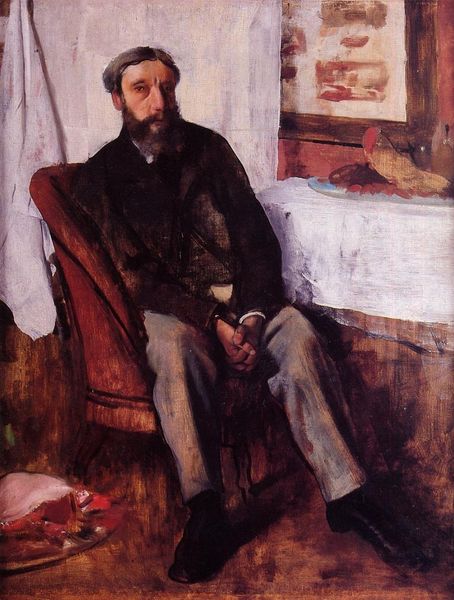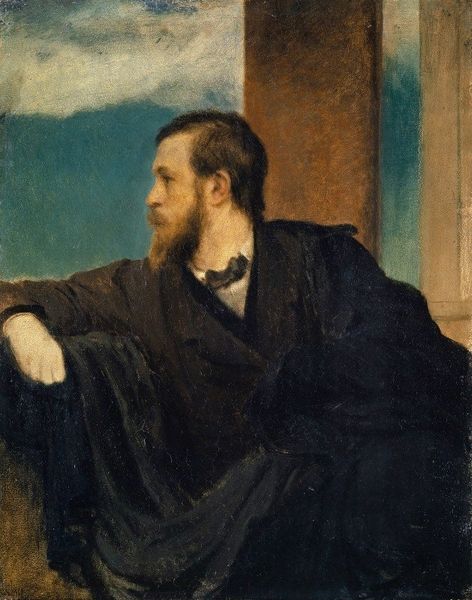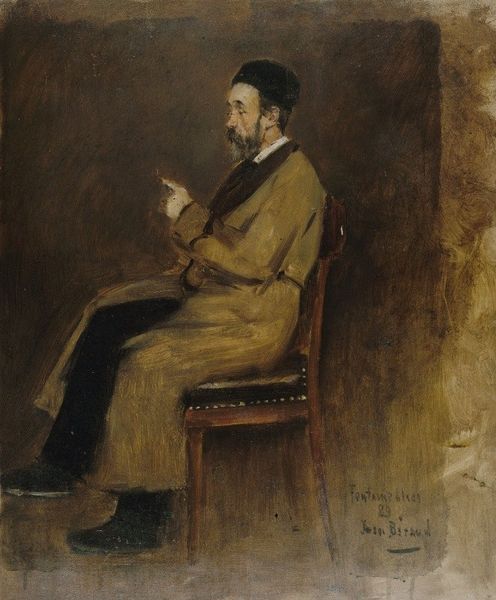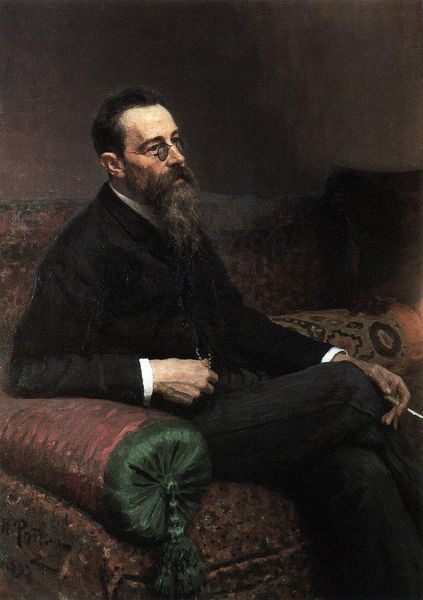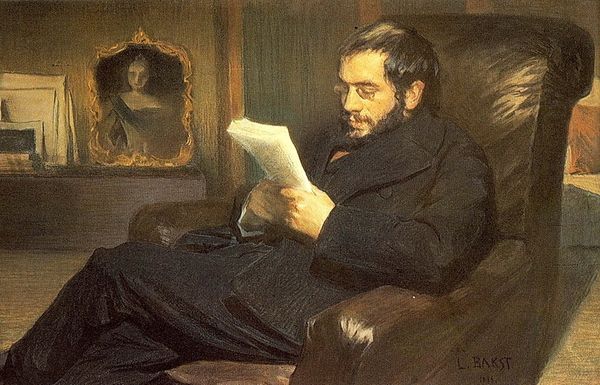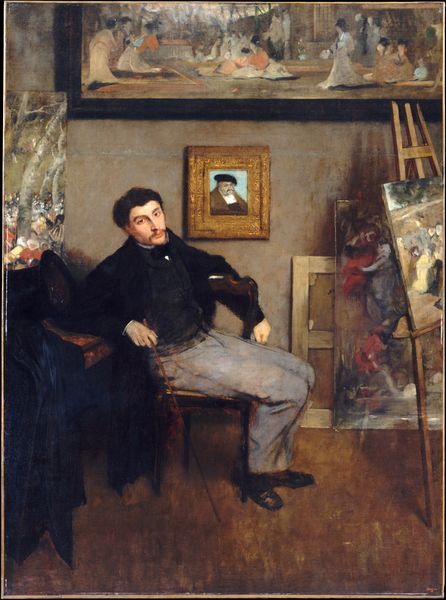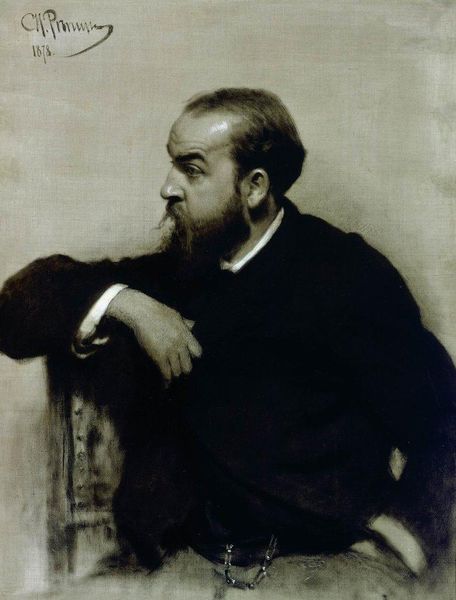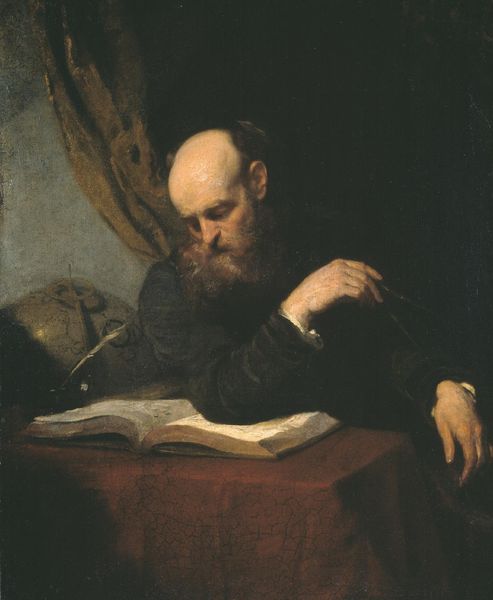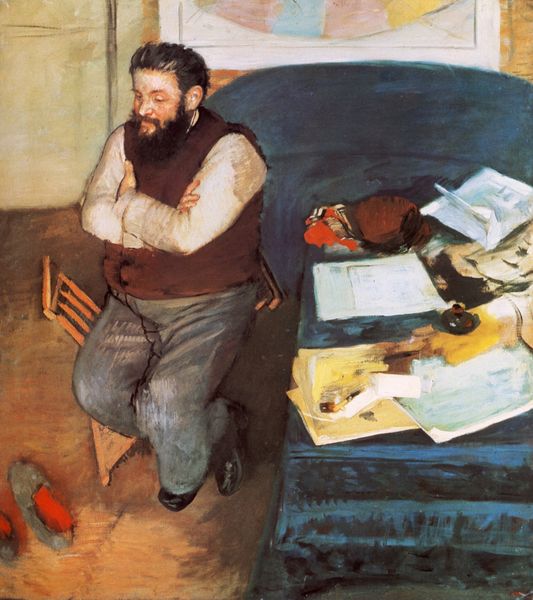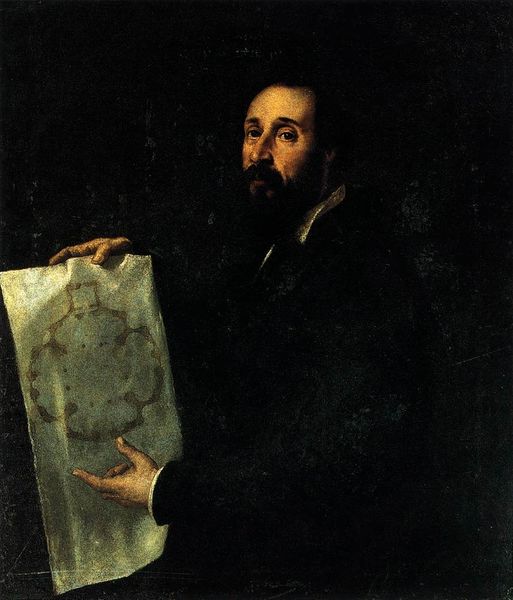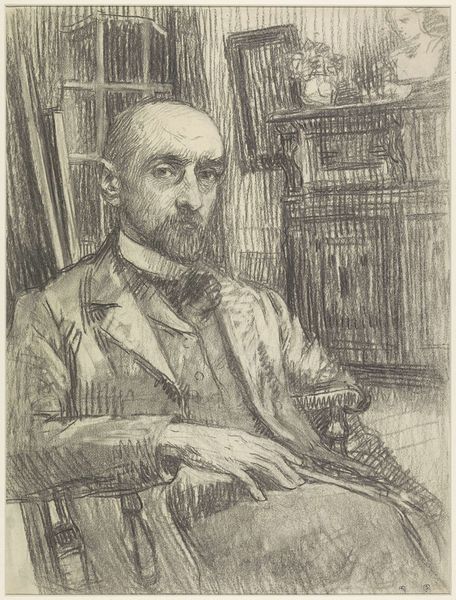
painting, oil-paint
#
portrait
#
painting
#
impressionism
#
oil-paint
#
oil painting
#
intimism
Dimensions: 146.5 x 114 cm
Copyright: Public domain
Editor: Here we have Édouard Manet's "Portrait of Émile Zola," painted in 1868 using oil on canvas. It’s interesting to observe how the textures of the book in Zola’s hands and the screen contrast against his dark coat. What stands out to you most about it? Curator: I'm immediately drawn to the dialogue Manet creates between the surface textures of the oil paint and the objects represented. The visible brushstrokes build form, but also point to the act of painting itself. Consider, for example, the juxtaposition of the highly rendered face against the sketchier handling of the background. What do you make of the Japanese prints displayed on the wall behind Zola? Editor: It almost feels like they're signifiers of Zola's taste, like cultural props. Curator: Exactly! The Japanese prints speak to the burgeoning influence of Japonisme on European art and culture during this period, reflective of expanding global trade networks and consumerism. Manet, by including these, acknowledges Zola’s engagement with contemporary artistic trends, but also raises questions about the commodification of culture. The inclusion of Japanese artifacts and art in this era demonstrates a clear link between aesthetic tastes and capitalist structures. Editor: That makes a lot of sense! So, it’s not just about portraying Zola but also commenting on the cultural landscape and artistic production of the time. Curator: Precisely! The very act of portraiture becomes a means of investigating the relationship between the artist, the sitter, and the broader economic and cultural forces shaping their world. Think about the role of patronage, for instance, and how that influenced the subject matter and style of the painting. This is about the means of making as much as the likeness portrayed. Editor: This perspective really opens up new ways of looking at this piece, and considering what was current with art production in the mid-19th century. Curator: Absolutely. By examining the material and cultural contexts of "Portrait of Émile Zola," we gain insight into not just the subject, but also the production and consumption of art within a rapidly changing society.
Comments
No comments
Be the first to comment and join the conversation on the ultimate creative platform.
